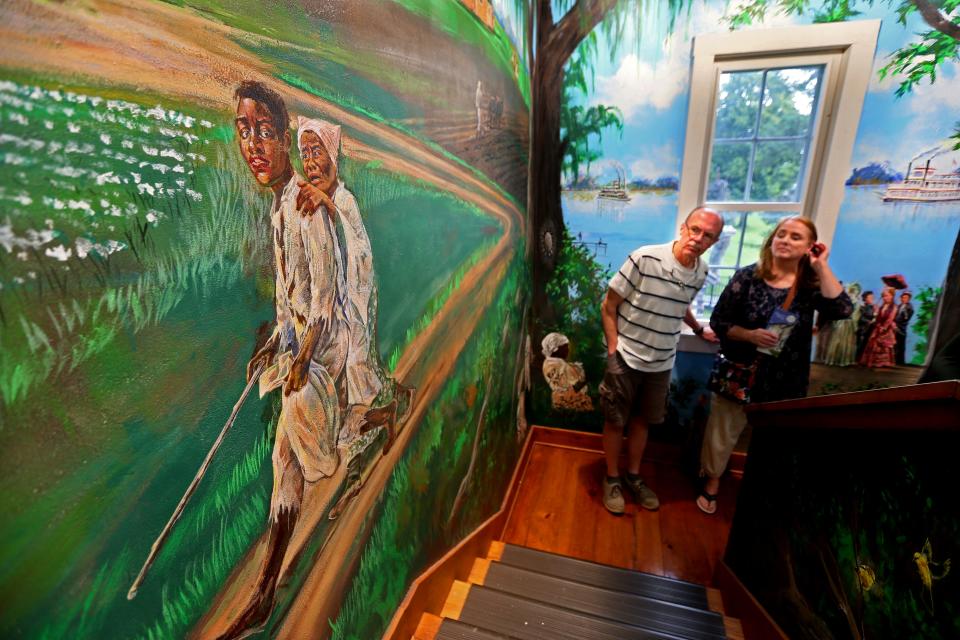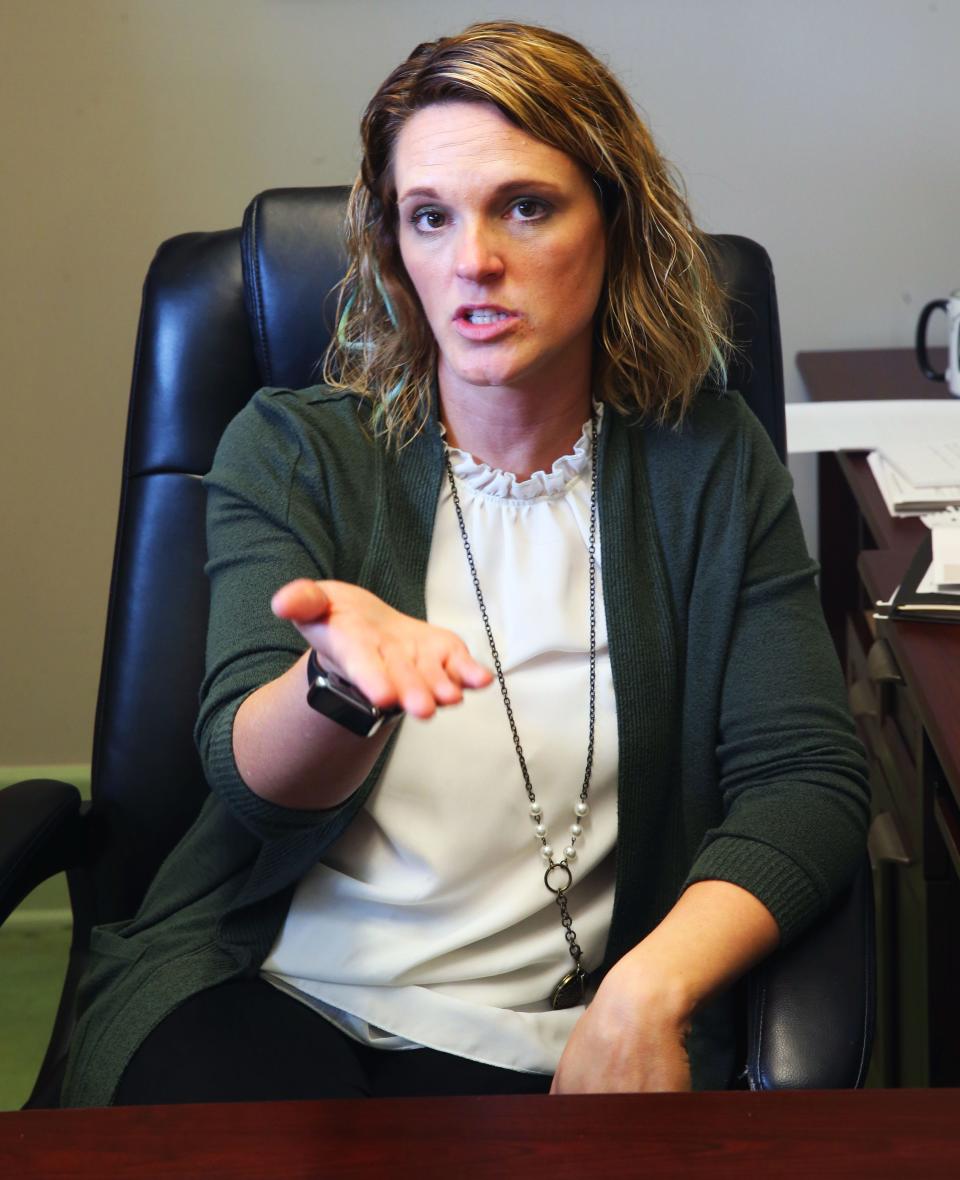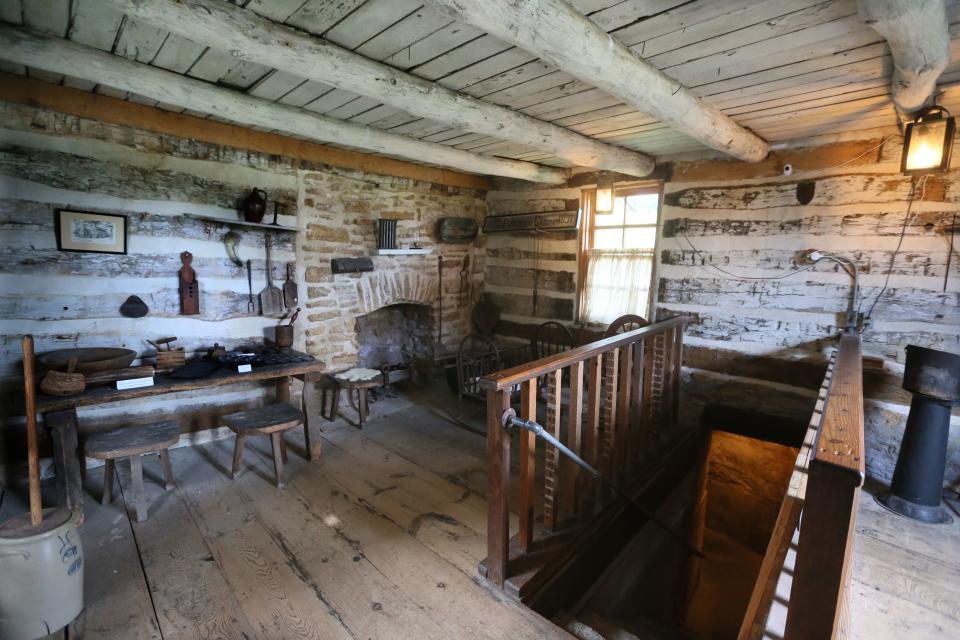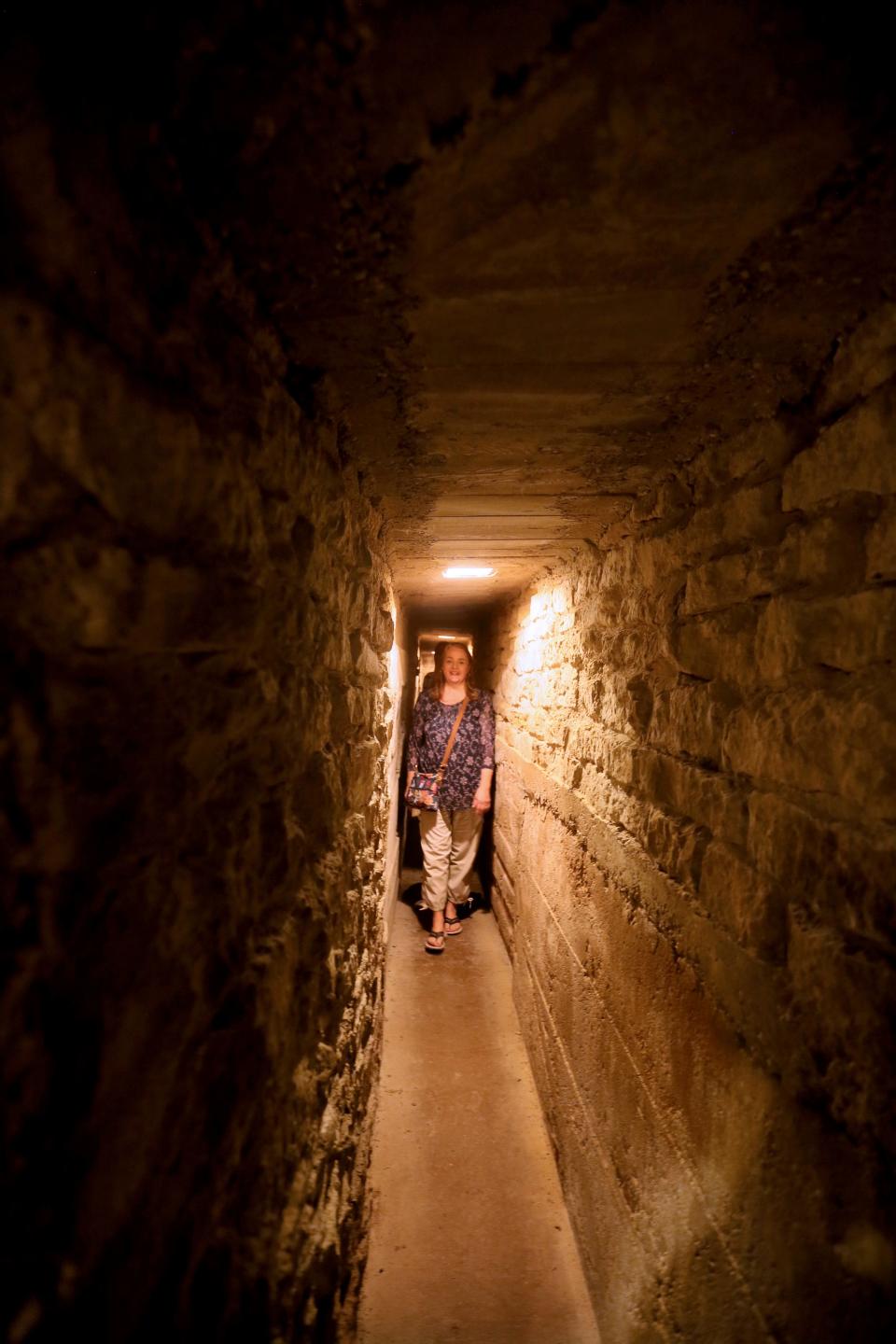More than just a historic inn, The Milton House is a surprising connection to the Underground Railroad
MILTON - When Keighton Klos started giving guided tours at the Milton House Museum, they were focused on the building's history and the time period when it was in its prime.
At the end, in passing, tour guides mentioned its role in the Underground Railroad.
Now as the role of race in U.S. history increasingly has drawn national attention, Klos has helped bring the last part of the tour to the fore.
The change has drawn new customers, who are fascinated by how a town northeast of Janesville could be connected to the efforts of enslaved Blacks to gain their freedom by escaping bondage.

Built in 1838, the Milton House is home to one of the only authenticated Underground Railroad sites in the state of Wisconsin open for tours. Built by Milton’s founder, Joseph Goodrich, the former inn and general store is a unique piece of history dating back to the abolitionist movement.
Klos, a resident of Milton and executive director of the Milton Historical Society, said her passion for the Milton House comes from seeing the effects of history on present-day minds.

“With teachers ...they’re almost scared to teach civil rights because there’s so much emotion around it,” Klos said. “So (the Milton House) offers that ‘safe spot’ as a starting point. ... I think museums are key to helping people understand and ask questions in a space where there’s not as much judgment.”
The museum allows guests to walk through some of the building's original rooms before walking through a hallway painted as a mural by Milton local Larry Schultz depicting the journey runaway slaves had to take in order to reach freedom.
The mural leads down into the root cellar of the historic site. Klos said it's understood that this was where slaves would hide before departing for their next stop on the journey to freedom.
During the most active times, Klos said, a runaway slave's destination would be across the border into Canada. Slaves making it to Milton likely would cross over to Milwaukee in the hope of heading north by water.

A walk through a narrow 43-foot long underground tunnel is the last experience guests have before emerging in Goodrich’s former log cabin on the other side. Originally, Klos said, the tunnel would have been no taller than 3½ feet, forcing anyone in the space to crawl on hands and knees beneath the earth.
Visitors to the Milton House learn about the challenges escaping to freedom by the Underground Railroad
On a recent visit, Sis Schmidt made the drive from Appleton with her husband, Gib. After their tour was over, the two said they were taken aback by the Underground Railroad portion of the tour.
“When we got to that tunnel, I realized people actually crawled through that to get somewhere else and how desperate they must have been to be free,” Schmidt said.
That's the reaction Klos wants.

“That was always the goal of mine,” Klos said. “We’re getting more people who come here and tell us, ‘We’re trying to travel to a bunch of civil rights sites across the United States and we’re going to start with you because the Underground Railroad started the civil rights movement in the United States.’’
Klos said she encounters people who have their notions of history challenged on the tour. Some are critical of how the material is presented, especially the emphasis on the Underground Railroad.
More: Schools can teach full US history under critical race theory bans, experts say. Here's how
More: History curriculum, books were written by and for white people. What about kids of color?
“When we take them through this whole context of what was happening in the United States and why this was happening and how that ties to current events today, by the time we’re done … you can see them thinking,” Klos said. “It’s not my place to change their mind, it’s my place to give them facts.”
The Goodrich family kept its involvement helping slaves a secret. There's no record of how many came through the house; only one is documented: Andrew Pratt, who took refuge in the basement in 1861.
Regular tours are given through the summer; the rest of the year, groups from schools or other organizations should call ahead to make appointments.
“I don’t think this should ever be forgotten, I think it’s really important in our history,” Schmidt said.
Our subscribers make this reporting possible. Please consider supporting local journalism by subscribing to the Journal Sentinel at jsonline.com/deal.
DOWNLOAD THE APP: Get the latest news, sports and more
This article originally appeared on Milwaukee Journal Sentinel: Wisconsin link to slavery and Underground Railroad housed in Milton

